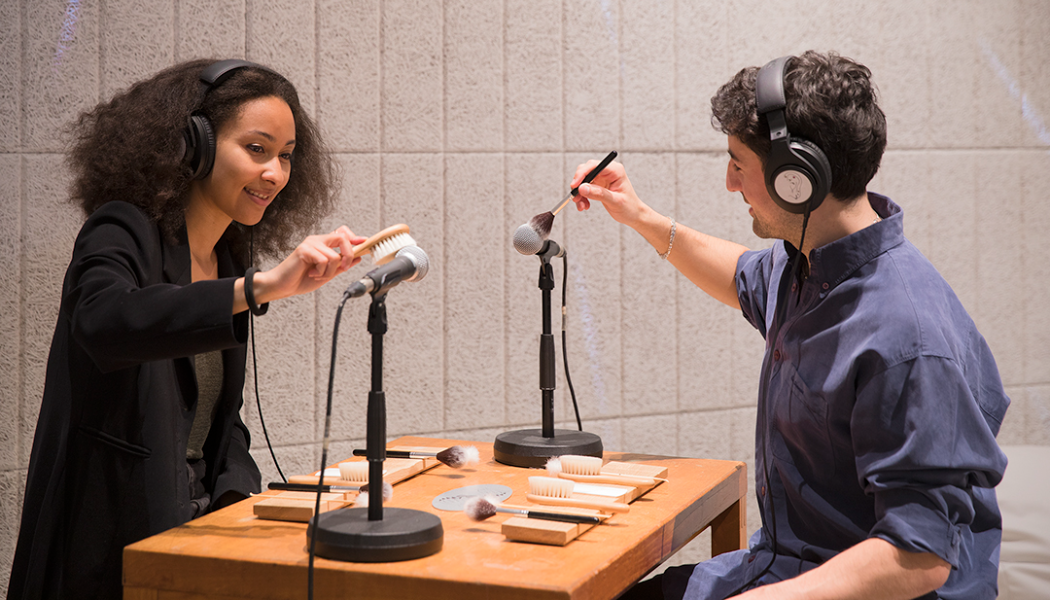What is ASMR?
Well that is the question! I had no idea what it was until the topic was brought up in a staff training session. To be honest, I am still unsure if I entirely understand it now. The short answer is ASMR stands for ‘Autonomous Sensory Meridian Response’, an automatic response your brain has towards something you see, feel, smell but predominantly hear. It is described as a tingling sensation on, or in your head, and it can make you feel calm and happy.
Why did I do it?
My role involves working with young people with SEND (special educational needs and/ or disabilities) and I felt ASMR was suitable for this in two ways. Firstly, it is sensory; I found that many people I work with who have SEND are very in tune with sensory learning, it is instrumental in their education at school and is a profound aspect in how they understand the world. This would make the pupils perfect to judge ASMR films and make their own. Secondly ASMR has the potential for positive benefits to mental health (although there is admittedly very little research out there). In my line of work, I have been told, many times, by teachers and tutors that their classes have low self-esteem and confidence. I wanted to see if ASMR could have a positive outcome in this regard.
The research
The Design Museum in London created an exhibition on the subject, so I went for a visit with some colleagues to find out more. We spoke to staff there and I quickly learnt that ASMR could not only make you feel happy and calm but trigger the opposite. The key, we were told, is there is a response, be it positive or negative.
The moment I went into the exhibition this truth was realised, I was very uncomfortable and felt awkward to be in the space. There were images of unnatural shapes moving on the wall and as I engaged with them it made me feel uneasy and a little unwell!
Next up however, was a room where you could sit on beanbags and watch Bob Ross paint. You had headphones to wear to pick up his distinctive voice as well as the sound of mixing paint and the brush on the canvas. I was in my happy place. It was, to me, deeply calming and satisfying to watch and listen to.
This allowed me to engage in the rest of the exhibition, from watching ASMR Artists (some I liked, some I disliked), to creating sound myself with dual microphones, crunchy objects and moving leather over microphones. I came away realising, you need to be comfortable in your environment to be allowed to both enjoy and be repulsed by the images and sounds you encounter.
How we created ASMR workshops
A four-week ASMR creation course was planned. It would introduce a class of six pupils with complex needs and Learning Disabilities to engage with us and our museum site in a creative and sensory way. The weeks were split into the following;
- Introduction to ASMR; This session was delivered in school to allow pupils to be in their own safe environment when they first met me and my colleague who would run all the workshops. We explored what ASMR is and watched some videos on YouTube, asking the group to tell us what they liked and did not like.
- Introduction to our Staff and site and exploring sights and sounds in the museum. We ran a tour of Lotherton, including the Wildlife World area outside. This was to identify where we wanted to film content for the following week
- Filming and Recording sounds we like including museum objects and animals in Wildlife World.
- Watch and evaluate the video we recorded, extra recording and completion.
At the start of each workshop, we watched and listened to calming videos, sat on bean bags (or wherever the pupil felt most comfortable), held light orbs, put on an oil diffuser and rubbed our hands together with moisturising cream. As described at the Design Museum, this was to attempt to create a calm atmosphere to be able to engage in ASMR more effectively. It also acted as a familiar constant for the pupils, making the transition between meeting them in school to meeting them at Lotherton a smoother one.
The video the Pupils made
Recorded with professional microphones and listened to by pupils on noise cancelling headphones, pupils made a video of the sounds they liked most. This was filmed and placed online.
What we found
The pupil’s engagement felt deep and meaningful. They had an opportunity to feel empowered to make their own choices. Right from the start we gave each pupil “emoji paddles” which they could hold up in response to ASMR videos we showed them.
At first when all the pupils held up the sad face at Bob Ross, I was worried. They all voted negatively for the second video we showed them but then the votes started to vary, the class did not pick what their peers went for, and they did not always vote one way or the other.
I realised that despite my love of Bob Ross, this group clearly saw something else in it, and that’s ok.

In the museum we had a similar split in reactions to sounds, whilst one pupil loved the sound of bubble wrap another strongly disliked it. When asked about recording bubble wrap the pupil showed they did not want to by pushing it away then smiling at a brush we chose, to then enthusiastically make sound and record it.
Conclusion
I can honestly say this was one of the most magical experiences I have had at work. I saw quiet pupils gain the confidence to smile and laugh at what they created, I saw a boisterous pupil become calm and peacefully engaged; the tutor told me they were surprised the pupil slept on the journey back to school because of how calm they were when they left.
The teachers who partook in the sessions intend on implementing ASMR workshops in school, such was the success of the workshops delivered at Lotherton.
One teacher said: “Our students have gained so much from it, to see them engage with the project was certainly a WOW! moment.”
Another added: “It encouraged positive relationships with adults and peers, working together across year groups. I hope that at school we can do more projects together across year groups as it is very beneficial to transition planning”.










